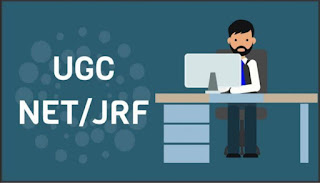MGNREGA IN COVID ERA: UPLIFTING SPIRITS IN RURAL INDIA - SIVAJITH.S & RAMESH.R
“SPIRIT OF INDIA LIVES IN VILLAGES” – MAHATMA GANDHI
ABSTRACT
Roughly saying 72% of our people dwell in rural areas, which cements the famous Gandhian quote that spirit of India lives in villages. This is why there is a need to focus on the economic development of our nation, where a trickle up policy can achieve Indian economic development by ensuring the development of rural areas. This objective can be fulfilled by generating sustainable employment opportunities at the rural level. The outbreak of Covid-19 pandemic devastated the whole world, and every nook and corner of world is getting perished at its wrath. So, a trickle up development is somewhat essential to change the current economic vulnerability.
KEYWORDS: Rural development, Subsistence wage, MGNREGA, NFSA, Disguised unemployment
INTRODUCTION
One of the major setbacks in rural development is the presence of various types of unemployment prevailing in rural economy. As a matter of fact, rural workforce depends heavily on primary activities especially on agriculture to make a living. So, it is not a big surprise to say that agriculture alone can’t pool this massive labour pool at rural areas. That’s why disguised unemployment and seasonal unemployment are quite common in villages. The nature of unemployment in our country has a stark contrast with the unemployment nature experienced at advanced overseas countries. In foreign countries unemployment occurs due to deficiency in effective demand.
In rural societies, individuals fell prey to the clutches of poverty which creates havoc in their lives. So, it is so necessary to generate more employment opportunities especially for the underprivileged and socio-economically backward sections of the society who dwells in rural India. Naturally people from the extreme grave conditions have a tendency to migrate to nearby towns or cities to find employment, but the outbreak of Covid-19 has forced out them from these pockets back to their source region, where there is no option to find a job. This is why the concerned authorities need to address this problem urgently to revive our economy at the grass root level.
REVIEW OF LITERATURE
Mathur (2009) claims that in a social audit undertaken in Andhra Pradesh revealed that in certain villages, people had not been paid for the work done. When comparisons are made out between the job card and passbook, stunning details came forth. Job card did not contain the inner pages that record the work done by individuals hence proving that job card itself was incomplete. It shows the ground reality of policy implication at local levels.
Bipul and Sebak (2013) carried a study about implementation of MGNREGA in ten villages in West Bengal, through which the strength and weakness of the system has been figured out. They concluded on pessimistic note that though MGNREGA has capability to uplift the rural poor by providing jobs but the flaws in the system hamper the satisfaction of people.
Roshni Pandey (2017) remarked that MGNREGA had made huge impact on reducing poverty and unemployment. But the worrying fact is about deficiency of funds released by ministry and the implementation challenges. Also, there is a need to focus on developing intensive monitoring and evolution systems.
OBJECTIVES OF THE STUDY
1. To study the MGNREGA scheme in the wake of Covid-19
2. To suggest the way forward as to MGNNREGA should roll out in pandemic condition.
METHODOLOGY
Secondary data sources like online publications, e-books, news articles had been thoroughly used to create this research work.
SOCIO ECONOMIC OUTLOOK
MGNREGA must be expanded to more areas and the concerned responsible authority needs to allocate funds to these schemes. As the economy is facing recession alongside pandemic, demand capacity is heavily affected with the non-purchasing power of people which cause chain reactions like shutting down production activities and correspondingly resulted in massive unemployment. This could aggravate further demanding ability from bad to worse. The normal rural development projects like balanced regional growth development with industrialisation schemes have no role to play in this dead-end scenario as no individual enterprise have confidence to invest in this sinking economy. So, we need to brush up Keynesian suggestions of undertaking productive activities to develop sufficient infrastructure at rural level. This could improvise the whole financial setting at the villages with implementation of pro people projects like MGNREGA. The productive infrastructure developments undertaken by the rural people through the scheme will get a moderate income which will increase their purchasing power parity. As the amount is not huge enough to save, people will use this income to buy essential items for them to survive. As the aggregate demand in rural area had improved with the injection of MNREGA, producers will be confident enough to produce more and thus more employment options can be seen as an outcome of this move.
AREAS NEEDED TO REVISE IN PANDEMIC SITUATION
The current performance of MNREGA needs to amend its working pattern in order to make them responsible to the ongoing hygienic scales efficiency in operation. Some of the valid suggestions to make NREGP more effective at rural pockets are:
• Prioritise individual benefit schemes
Works should be undertaken by the small group of workers not more than 6 in each group. As the Kharif season is yet to begin, the renovative works like ensuring strong bunds, fencing could be initiated. Along side the projects for constructing poultry sheds, farm ponds can also be encouraged at this stage. The further advances in this scheme depends upon how long the lockdown continues, a preference from more material intensive to less material intensive is appreciable in this situation.
• Rise the number of work schemes
Normally only 2-3 work schemes are undertaken per panchayat, which force workers to disguised unemployment. To put an end to this crowding tendency and involuntary unemployment, there should be an increase in number of schemes per village. A rise from 2-3 work schemes to 6-8 work schemes would have been great at each village.
• Make immediate payments
People lives in rural area urgently require cash in hand and the important aspect is the immediate payment to the labour. Normally payments of MNREGA delay by week or months. But to recover from the current economic stress, it would have been more effective if wage payments should be made in cash and on the same working day. To make this happen, panchayats who are responsible for implementation of MNREGA can advance rolling fund up to Rs.20 lakh which can be used to make payment to workers.
• Arrange daily workload
To follow Covid-19 guidelines, it is mandatory for workers to wear masks and other shields to protect face, most public part of our body. Workers under MNREGA involve in physical labour and may subsequently face breathing related diseases. To curb this pressure, as long as workers needed to wear mask, the daily allocation of work assigned to them should be reduced. Along side every work site must be well equipped with soap, sanitizer and water to keep workers safe.
• Hike in wages
Pradhan Mantri Garib Kalyan Yojana managed to accommodate relief measures for MNREGA workers. With this injection daily wage rate must not be an amount less than 225 per day. In fact, Union government hasn’t actually allocated any additional resources to MNREGA. To cope with the ongoing grave crisis, MNREGA wages must be at a minimum in par with states’ agricultural wages. For instance, Odisha government has increased the wage for unskilled manual work under MNREGA to 298 per day in four districts, where people with migration tendency is quite high.
• Increase in workdays
As people from rural part of India could make only limited income, the number of days of work per job card should be increased to 200-person days per year. This policy can be effective if it is applied in panchayats which have high percentage of marginal and landless farmers. Odisha state government have also made a remarkable step to increase 100 more workdays in 20 vulnerable blocks.
• Quick access to job cards
Job cards should be issued to all who demand MNREGA work, within 2 working days of application; and also need to make sure that no middlemen are involved in issuance of job cards.
CONCLUSION
The above discussed mechanisms could facilitate MGNREGA to work effectively in the rural economies to increase purchasing power parity which in turn will revive the economy from clutches of slump. In this pandemic situation, MGNREGA helped in providing subsidised ration food to 90 million households between April and July 2020, under NFSA, at an average of 720 million people every month during the same period. In accordance with central government data till July 2020, roughly 45% of Rs.101500 cr. for MGNREGA and 44% of 115569 NFSA funds for the ongoing financial year has already been allocated to the states. The demand is these two schemes came down in the July, indicating that who had left for villages may be migrating back to cities to looking for work, as industrial activity has started in and around urban pockets. Under MGNREGA, 24.2 Million household get direct benefit in July whereas in June 38.9 million people get better which is the all time highest benefiting count for a month under the same scheme. Similar sort of trend can also be seen in the case of disbursement of subsidised ration, which hits high in June with 94% of the 80 million identified beneficiaries under NFSA getting food grains. Going with the trend as per MGNREGA, in July it came down to 91%. As per the statement of rural development ministry official, the allocation of MGNREGA funds is less in current financial year and at this pace it will be used up by December 2020. In April-July period, work execution rate was 25% higher under MGNREGA scheme compared with rest of fiscal period. Through this way, rural income has increased. It also saw 46% increase in person-days and 12% increase in average wage under the scheme. It is true that MGNREGA is a demand driven scheme in which Union government allocate funds to states and the finance ministry need to make sure there is no shortage of funds.
BIBLIOGRAPHY
1. MGNREGA Operational Guidelines Frequently Asked Questions (2013), Ministry of Rural Development, Government of India.
2. Gayathri Vasudevan, Shanu Singh, Gaurav Gupta & C.K. Jalajakshi, MGNREGA in times of Covid-19 and beyond: Can India do more with less? Indian Journal of Labour Economics, September 2020
3. Covid corollaries, CRISIL, August 25, 2020
4. https://m.hindustantimes.com/india-news/45-of-central-funds-for-rural-jobs-subsidised-food-spent-till-july-due-to-covid-19-crisis/story-7Lyj8edgn1RuEabBTgBDZJ_amp.html
5. https://www.thequint.com/news/india/how-nrega-can-help-rural-areas-in-times-of-covid-19-distress









